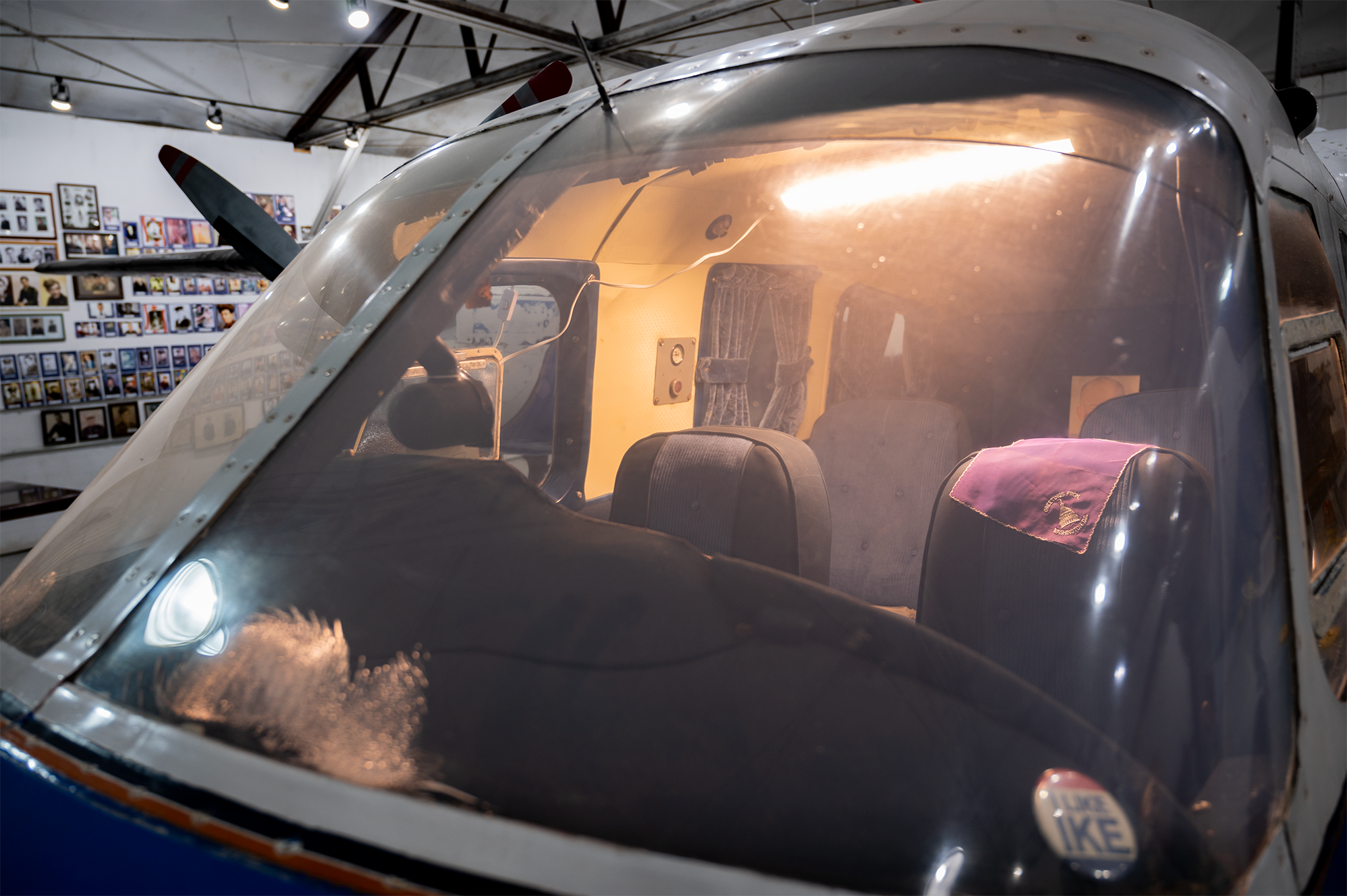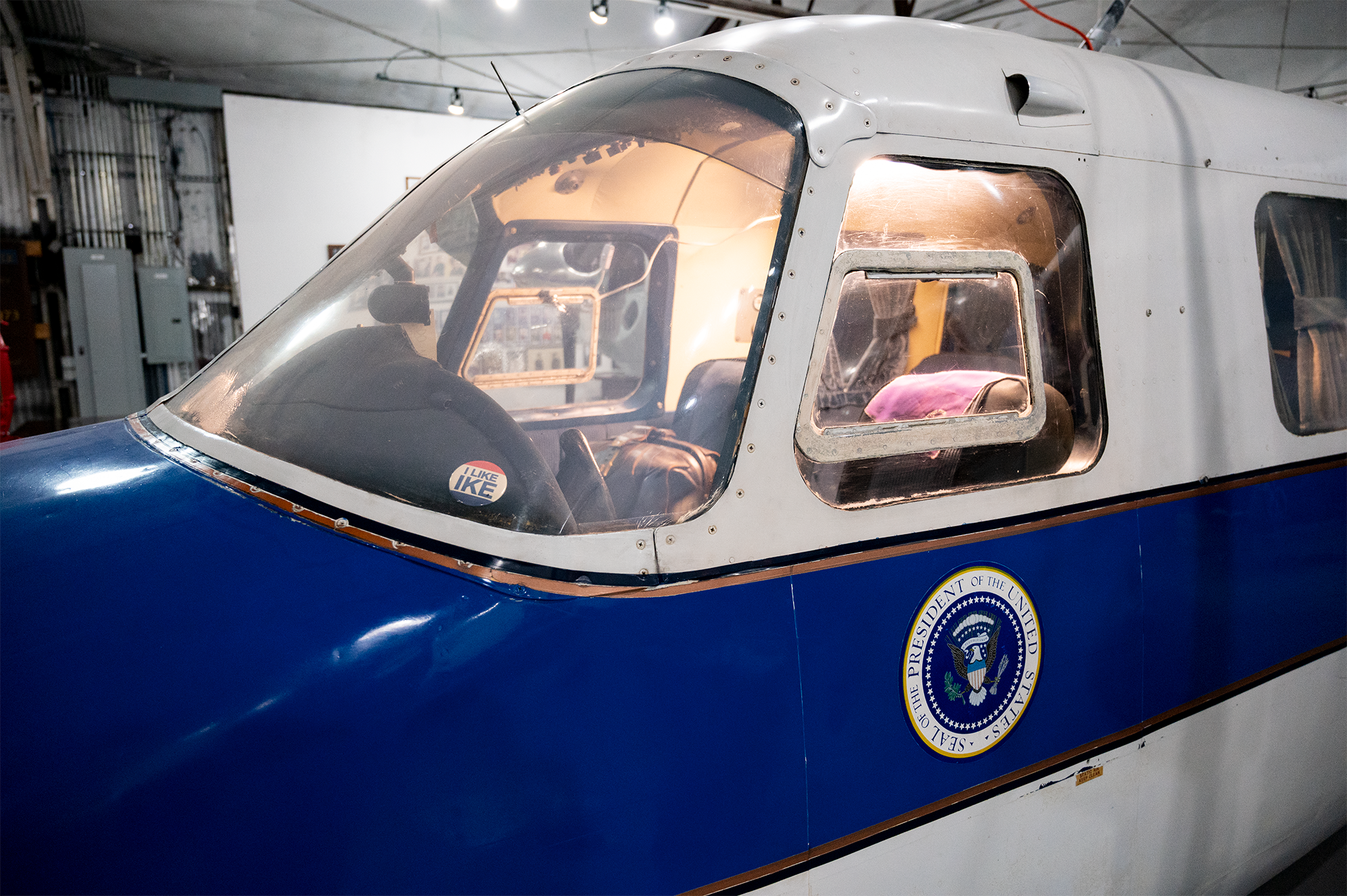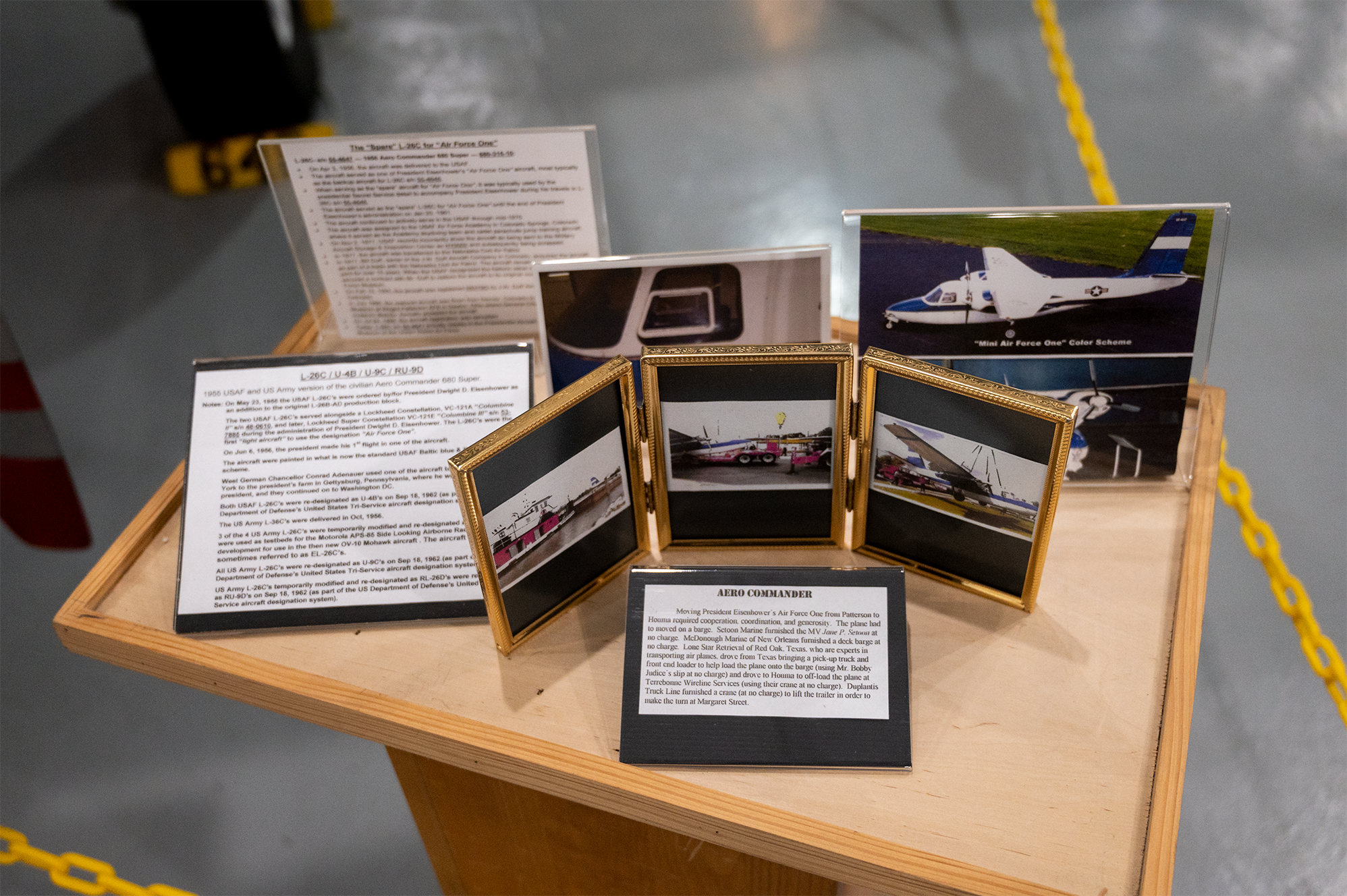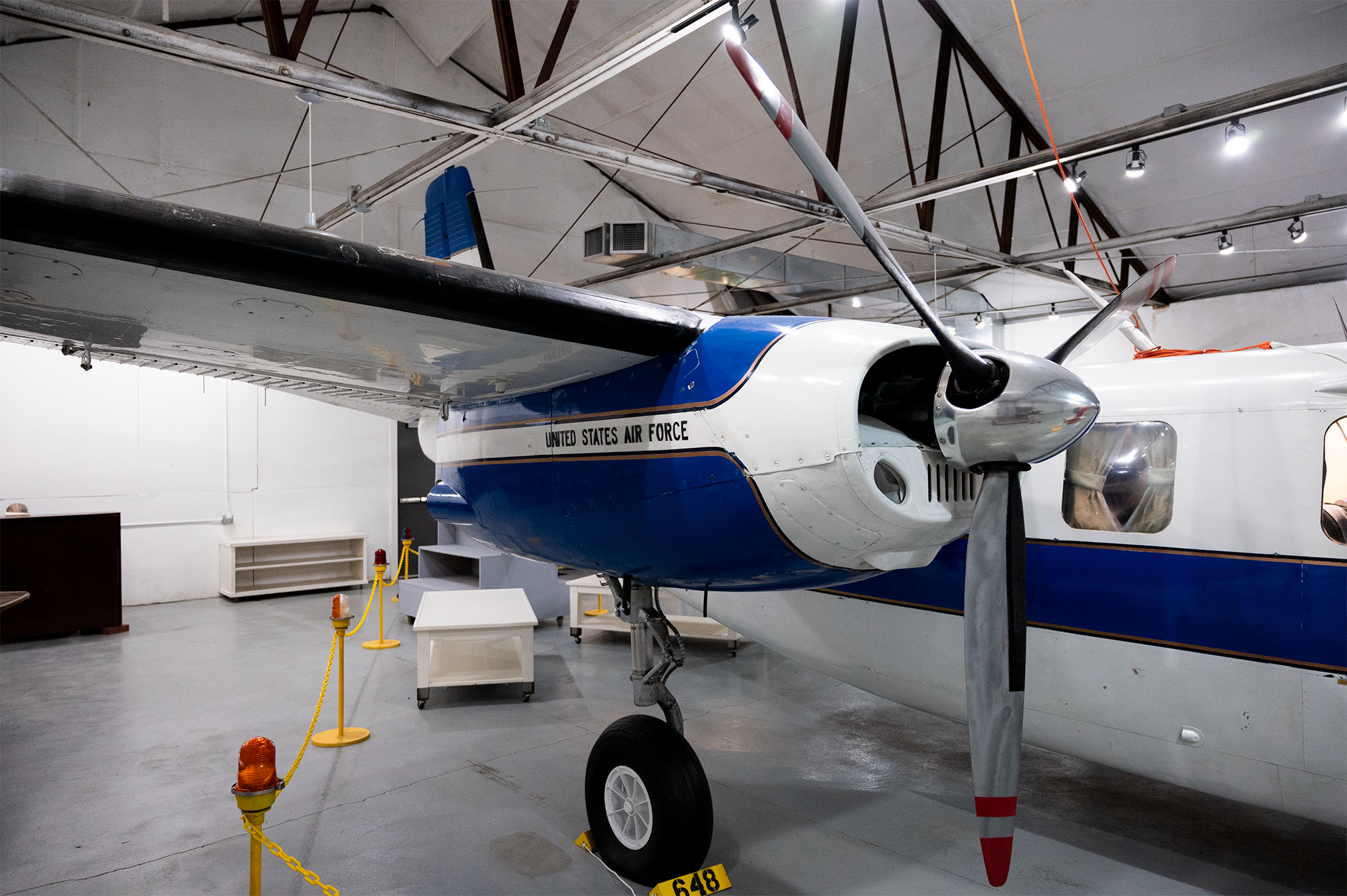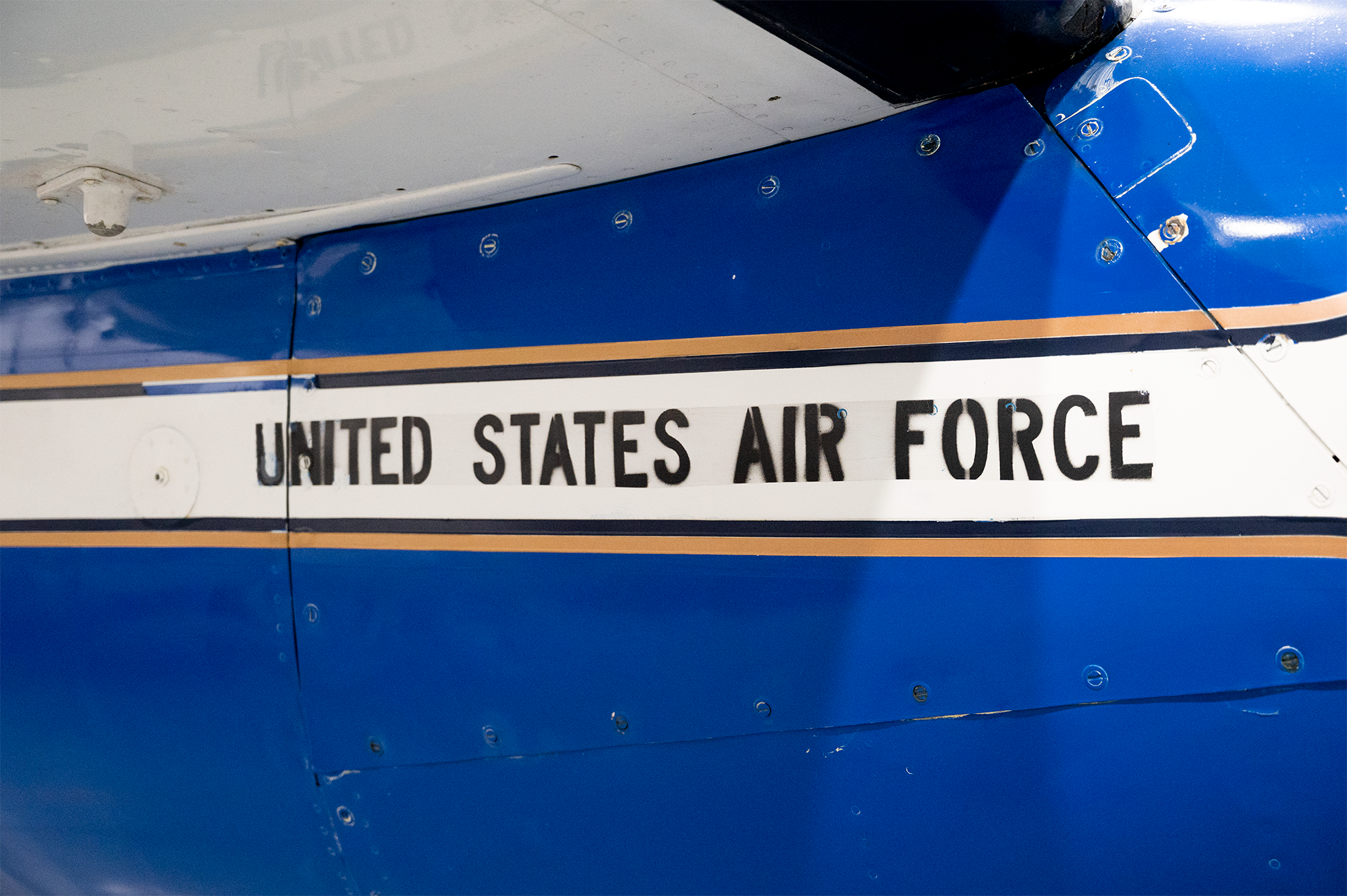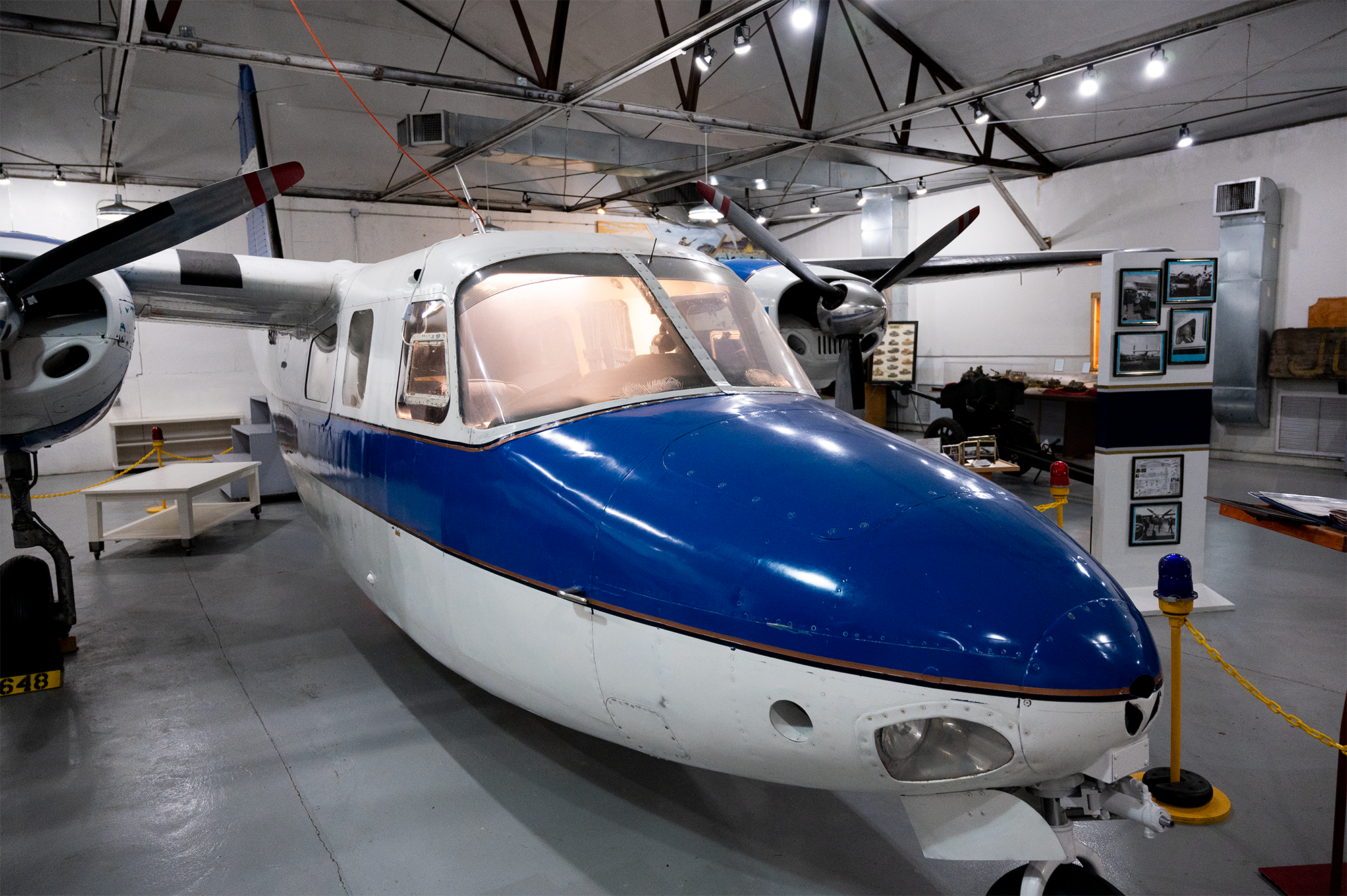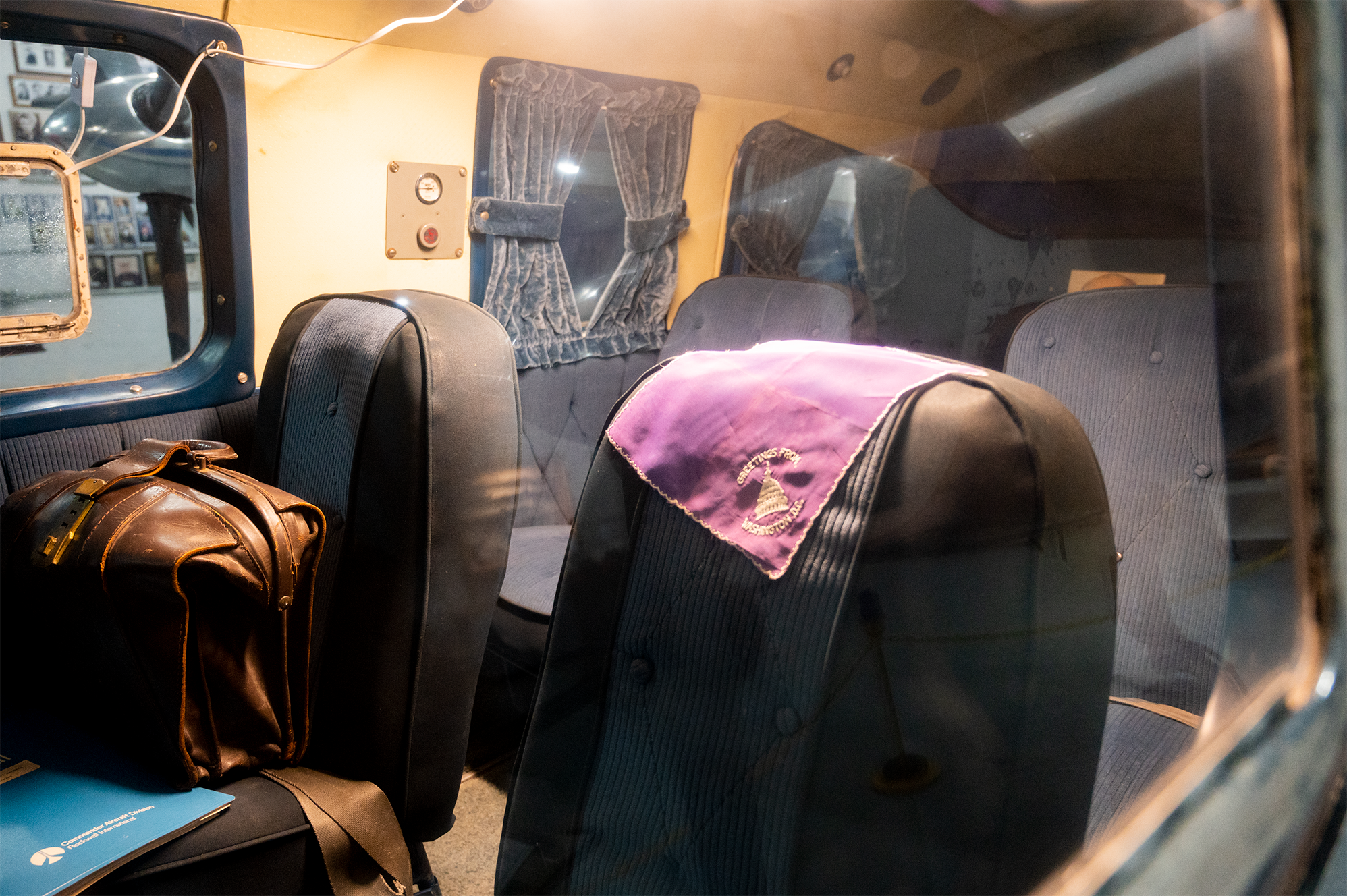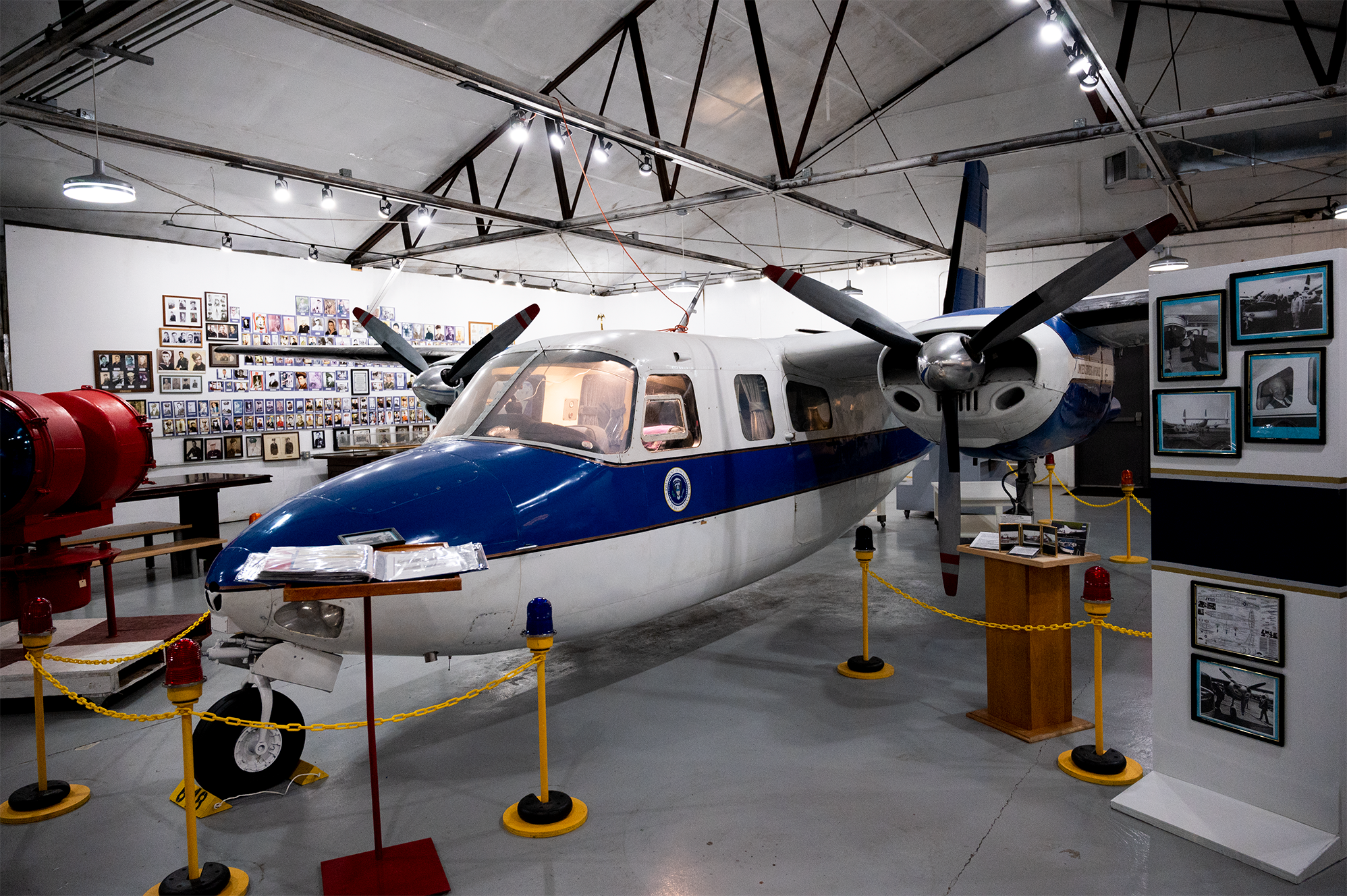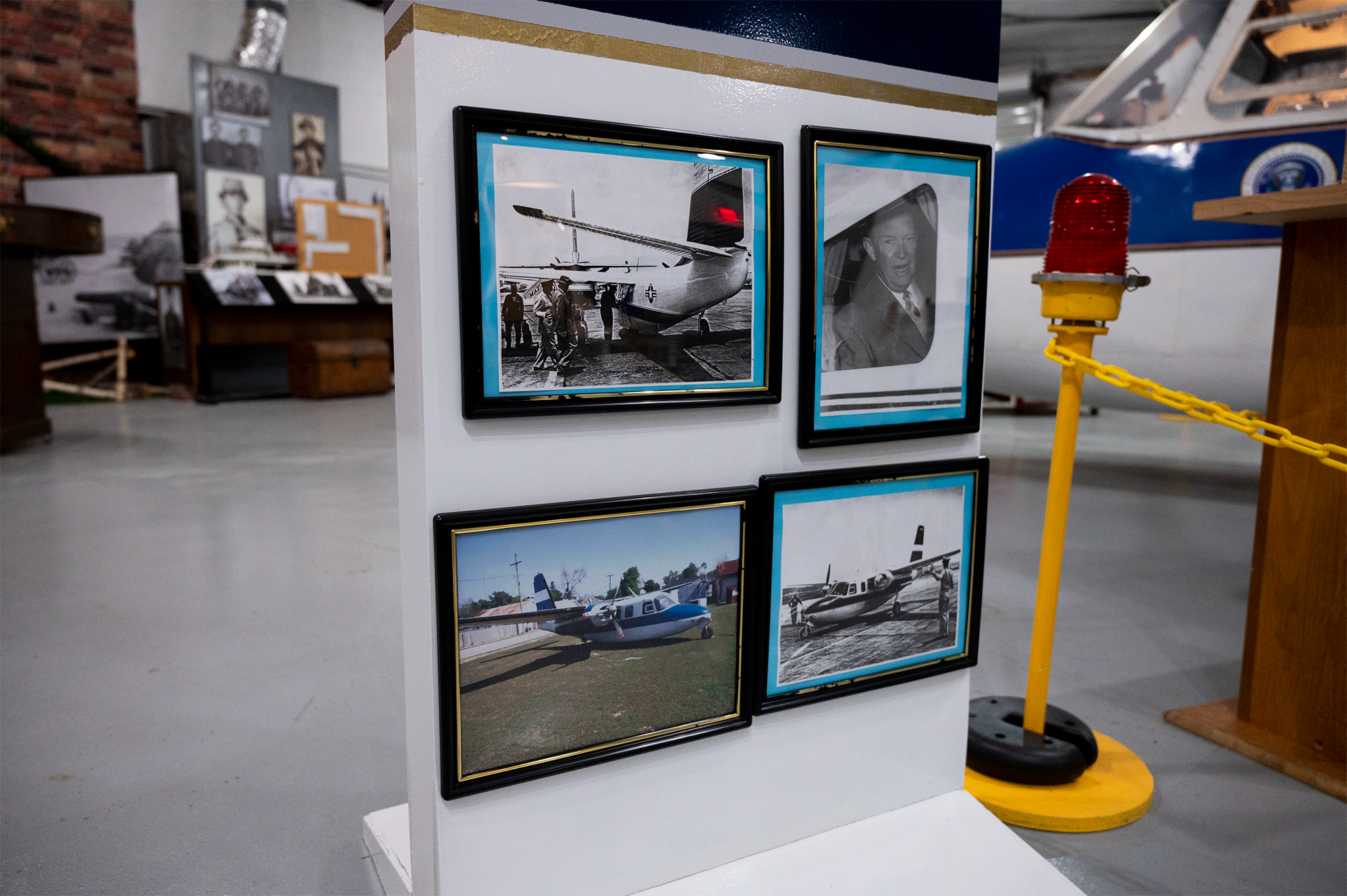Air Force One Aero Commander
/President Dwight D. Eisenhower left behind a legacy as an American icon when he passed in 1969, immortalized in history as both the five-star general during World War II who oversaw the famous Battle of Normandy and the 34th Commander-In-Chief of the United States.
As of April of 2010, the Regional Military Museum is honored to display a piece of President Eisenhower’s legacy in the form of an Air Force One Aero Commander U-4B/L-26C used by Eisenhower himself.
The L-26C displayed in the museum was one of 15 L-26s purchased by the U.S. government to offer President Eisenhower a more compact form of transportation for small trips that did not require the use of a large aircraft. The majority of those trips involved short hops between the nation’s capital in Washington, D.C., and Eisenhower’s home in Gettysburg, PA.
The craft, which Eisenhower utilized until 1960, was operated by a two-man crew and could hold a maximum of eight passengers at a time. Measuring at 35 ft., 5 in. by 14 ft., 9.5 in. with a wingspan of 44 ft., 1 in., the L-26C was the smallest Air Force One Model - and the first to be donned with the famed blue and white paint scheme appearing on presidential aircraft today.
This particular L-26C (no. 55-4648) served as the “Spare L-26C,” acting as a backup to another L-26C, no. 55-4647. When carrying out this role, 55-4648 typically transported Eisenhower’s Secret Service agents to the president’s destination.
L-26Cs are packed with unique stories from Eisenhower’s presidency. For example, the former president often enjoyed piloting them himself when in transit. In addition, they were at one point fitted with beds for Eisenhower to utilize after he suffered a heart attack a couple of years into his first term in office.
The L-26C displayed at the Regional Military Museum was once used to transport the president to see the site of the Battle of Gettysburg in 1957.
Though L-26C’s presidential service ended in 1961 along with Eisenhower’s time in office, the U.S. government continued to utilize it for additional purposes. In 1962, the L-26C was redesignated as U-4B and became a method of transport for VIP government-related flights. Eight years later, the Air Force Academy gained ownership of the craft to use for parachute jump training.
55-4648 saw several homes over the next few decades, including the Nebraska Civil Air patrol and the Air Force Museum.
The craft, owned by the state of Louisiana, made its way to the Regional Military Museum through a continuous loan from the Wedell-Williams Aviation and Cypress Sawmill Museum, after the Patterson-based museum underwent a move and renovation of its collection.
55-4648’s trip to Houma would prove to be a tedious and complicated one - requiring the use of a barge and the aid of countless volunteers to make the trip possible.
On April 13, 2010, the move began with General Crane Company of Morgan City lifting the craft onto a barge supplied by McDonough Marine of New Orleans. The barge was then transported to Houma by the Jane P. Settoon (provided by Setoon Marine).
Once it arrived at its new home on April 14, 2010, a crane supplied by Terrebonne Wire Line lifted the craft onto a tractor trailer provided by Lone Star Recovery of Texas. With the help of a police escort, Lone Star Recovery navigated the streets of Houma, taking up both lanes and dodging telephone lines, to carry 55-4648 to the Regional Military Museum.
The back wall of the museum was then removed to clear the way for the craft to be positioned inside the museum. After a crane provided by Duplantis Truck Line lifted the L-26C off of the truck, Regional Military Museum volunteers pushed the craft into its new home, where it remains on display today.
A decade after the craft’s arrival, visitors to the museum have the opportunity to pay tribute to Eisenhower’s legacy by viewing and learning the history of the former commander-in-chief’s most unique modes of transportation.

